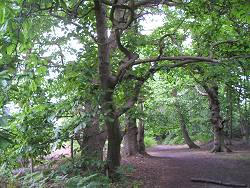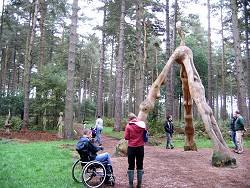Summary
What do people in towns get out of nearby woods?
Summary


Forest Research worked with participants in activities at two Community Woodlands (Bentley and Brodsworth in Doncaster) and two Destination Woodlands (Birches Valley, Staffordshire and Shorne Woods, Kent) to find out about their woodland experience and motivations for visiting.
Key findings
- Access: infrastructure (paths, car parks, toilets, benches) is critical for some participants, particularly the elderly, disabled and those suffering from long term health problems
- Balance: visitors want management practices to find a balance, so the woodland environment is accessible and attractive, but still ‘natural’
- Motivations: trying new activities, getting outdoors into the fresh air, being encouraged by others, wanting to pass on enjoyment of woodlands to children, making a contribution by volunteering
- Benefits: restoration – peacefulness, calm, restfulness – and stimulation of the senses
- Social benefits: many people like sharing activities and experiences with others and are more likely to behave more socially with strangers in woodland activities than they might do in everyday life
- Enjoyment: people enjoy watching others take pleasure in the woodland environment
- Connections: woodlands provide a sense of history and continuity, creating atmospheric experiences and a sense of natural grandeur
- Security: participants felt woods provide security, shelter and screening from others or from the built/urban environment
Publications
Funders and partners
Commissioned and funded the Forestry Commission.
The research was undertaken by the New Economics Foundation and managed by Forest Research.
Contact
Status
2012.
